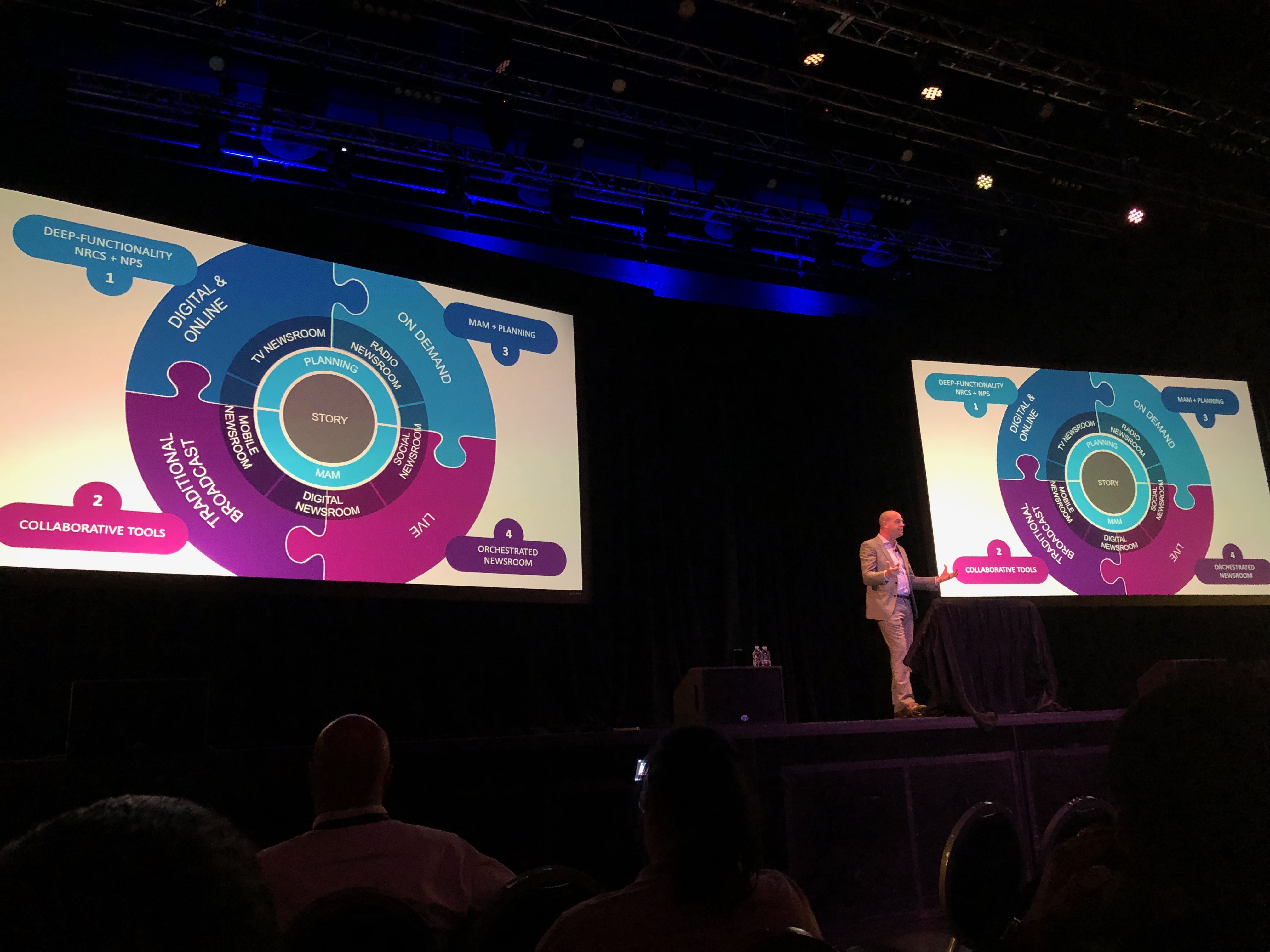Remote editing is here

Editing and collaborating from anywhere with anyone? Yes! We learned more at Dalet Pulse, which kick-started its worldwide tour in London
Each year, asset management expert Dalet holds a summit around the NAB Show where media and tech professionals can connect, collaborate and celebrate. It’s called Dalet Pulse and it’s had a great reception among the largely US-based NAB crowd. But Dalet is an international company, with headquarters in France and offices on five continents.
This year, Dalet is bringing its Pulse technology conference to the world, kicking off in the UK. Held in partnership with AWS and Adobe at Amazon UK headquarters in London, Dalet Pulse UK spent a half-day analysing and discussing changing workflows in a fully connected production environment.
One of the central themes of Dalet Pulse UK was the practical reality of remote editing. Even until very recently, a production team at a remote location couldn’t fully and effectively access and leverage assets back at home base. Likewise, a newsroom back in a national capital didn’t always have easy access to the work being done by a team in the field.
Editing from everywhere
Dalet presented on Remote Editing: How to enable distributed teams to collaborate around editing from everywhere. It’s natural that Dalet would want to dive deep into the topic. At this year’s NAB Show, the company announced its new Dalet Remote Editing framework, which brings the full-featured multimedia editing capabilities to editors working in the field or at remote offices, without requiring a PAM/MAM at every location.
Media organisations in fast-paced production markets like news, sports or reality TV often have extensive field multimedia editor that has native integration with Dalet’s Galaxy five MAM and workflow orchestration platform. Galaxy is a mainstay for organisations working with large amounts of content piped in from multiple sources, especially in live and just-in-time environments like newsrooms. OneCut allows for fast-paced, streamlined editing for multiple content outlets, and offers tools for collaboration, content sharing and remote workflows.
Accelerated media exchange from the field to home and back are key for success
OneCut can operate in a stand-alone mode as a simple editor, in a connected mode, allowing users to access a content catalogue and download content locally, and then in a fully integrated mode where OneCut is part of a Dalet Galaxy five framework. It’s in this integrated mode that flexible, high-powered remote editing can take place, with editors in the field able to push and pull content from a central facility.
Dalet’s director of product strategy, Kevin Savina, explains how, in using the Dalet Remote Editing framework, editors can access any content in the Dalet Galaxy MAM, no matter where they are: “Using the framework, an editor can preview content that is on the cloud, referenced in the central system, and then they can just put it on their timeline. With it copied to their timeline and to their drive, along with handles, they can keep working even if they have a bad connection.”
He adds: “The Remote Editing framework will be extended to support a number of NLEs that we work well with, especially Adobe Premiere. We already have available a panel called Xtend that gives you a view into the Dalet Galaxy content, right from the Adobe Premiere interface, and we’re planning to extend to other NLEs.” Premiere is one of the most widely used editing applications in the world, one with which most freelancers and stringers are familiar.

Dalet Remote Editing framework connects journalists, producers, editors and other content creators to the central content hub, enabling in-the-field users to edit, assemble and collaborate
With OneCut today (or Adobe Premiere in the future) on their machines and a connection to a Galaxy infrastructure, complex editing from a remote location then becomes available to just about anyone. It’s as if all content, even content 2000 miles away, is right on your machine.
“There are many different ways of doing editing from everywhere,” continues Savina. “One is the way we’re doing it today with OneCut and that we’ll be doing with Adobe in the future. But there are also ways of leveraging remote desktop capabilities to provide distant teams access to editing capabilities. For example, where you can provide Adobe editors with remote editing using a mix of on-premises and cloud infrastructure.”
He explains: “You used to have to connect to an FTP site or a portal and then do a download or partial download of pieces of material. You would wait for that download to be finished and you managed it in your local content. Then you would edit and send it back. Now if you’re a remote bureau or producer, you’re completely connected to the central newsroom, and not feeling the pain of being far away. All of the caching is being done in the background.”
New audiences, new tools
In a presentation Fast-Paced News and Sports Production, Dalet Pulse UK also explored how newsrooms can use technologies like the Remote Editing framework to more effectively get reliable information and analysis to an always-connected public. When a major incident occurs, it’s a race against time among newsrooms to get the story out first. A matter of a few minutes can determine whether that story is the top hit on a social platform or search engine, or gets buried along other also-rans. Often in the digital world, it’s the first story that is the most shared, most linked to and even the most plagiarised. Being first often means setting the tone for the conversation around a story.
The summit also looked at how digital businesses can better deal with today’s complicated content supply chains in a session called Media Supply Chains for Multiplatform Audiences. With content being tailored for many digital outlets, from broadcast to social media to Netflix, and endless assets for localisation and marketing being produced, a solid MAM is essential for tracking and coordinating it all. Wider use of format standards like IMF are also easing pain points by embedding instructions for creating different assets within the file format, rather than producing a new file for every single possibility.
Dalet Pulse’s exploration of ‘edit everywhere’ will have real resonance as it rolls out its Pulse summit in locations worldwide this summer, including Tokyo on 18 June, Singapore on 20 June and Sydney on 16 July.
This article originally appeared in the June 2019 issue of FEED magazine.










